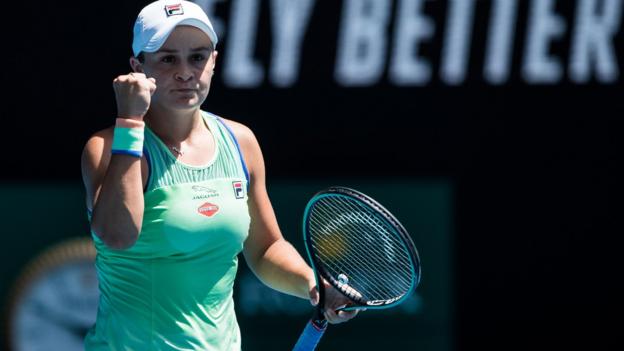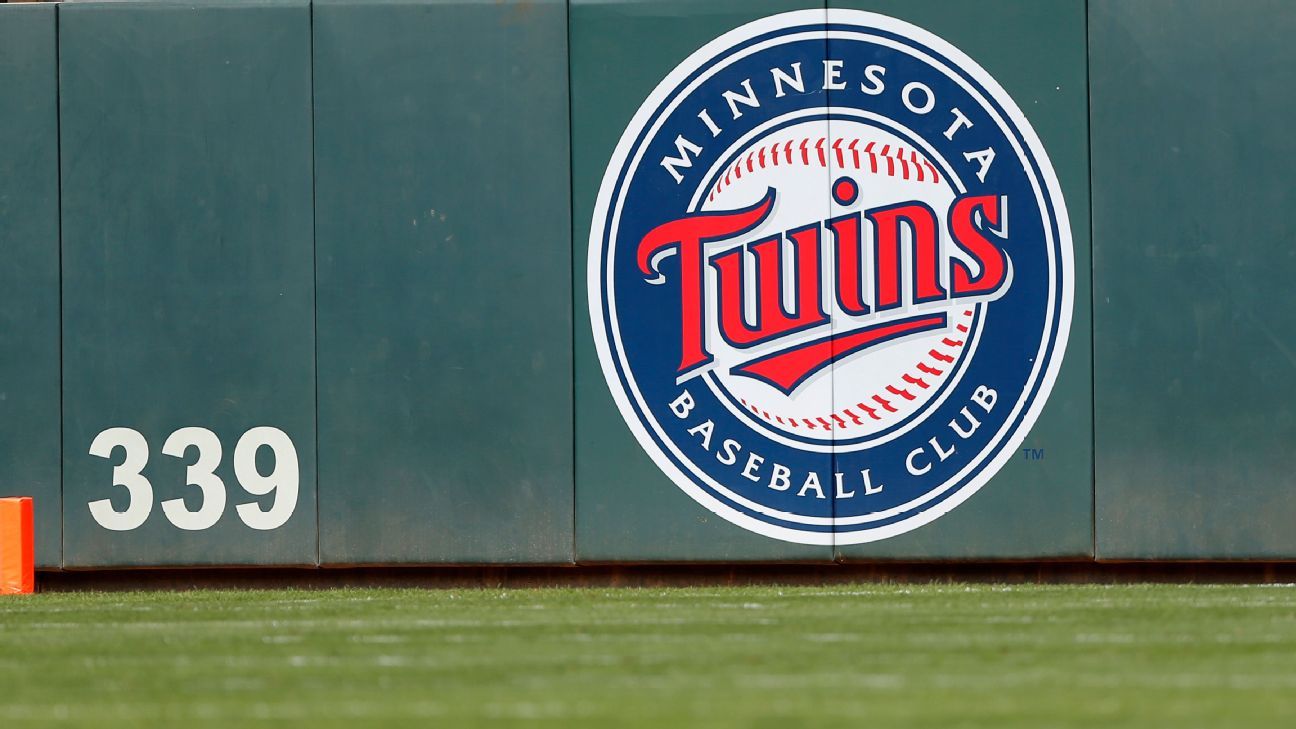COSTA MESA, California -- IT WAS SUNDAY morning in Balboa Island, a harborside community off Newport Beach, and Tony Altobelli was getting his steps in. At around 11 a.m., his phone buzzed with a text message from his brother Jim. TMZ was reporting that Kobe Bryant had died in a helicopter accident. Tony tried to pull up the story, but the website crashed. He called Samantha Doucette, a women's basketball coach at Orange Coast College who previously worked at Bryant's Mamba Sports Academy.
"I heard," she said, "but where's your brother?"
Tony was confused. John Altobelli, the longtime baseball coach at Orange Coast, had struck up a friendship with Bryant because their daughters were teammates on the same club basketball team. Sometimes, John even accompanied Bryant on his helicopter. Tony knew this, but he had no idea John was traveling with him that morning.
Tony stopped his workout and focused on his smartphone screen. He sent John a text -- Are you and your family OK? I'm hearing things. -- but didn't get a response. He quickly became nervous. He put two assistant baseball coaches in a group chat and asked if they knew anything. Two minutes later, one called. It was a man named Tim Matz, who was so hysterical that Tony could barely make anything out.
Eventually he heard three words: "They're all gone."
"Tim," Tony said, "are you saying John was on the chopper?"
"John and Keri and Alyssa were all on the chopper," Tim responded, "and they're all gone."
Keri was John's wife; Alyssa was their 13-year-old daughter. Soon, the world would learn that they were three of nine passengers on a helicopter that was bound for Camarillo Airport but crashed 30 miles south in Calabasas while en route to a game with Bryant and his 13-year-old daughter, Gianna. Nobody survived.
Tony had lost a brother, a sister-in-law and a niece. He had to grieve. But as the sports information director for the school where John was a legendary figure, he also needed to work. He sat on a step near the Balboa Island Ferry and couldn't feel anything. A stranger caught wind of his conversation and interjected.
"Were you talking about Kobe?" the person asked.
"Yeah," Tony said. "Sorta."
JOHN ALTOBELLI, 56, was an unheralded titan. It wasn't just the four state championships and the 705 wins over the course of a 27-year career at Orange Coast. It was the $3 million he raised on his own to make the baseball facilities resemble a major league complex. It was the countless lives he impacted, both with his infectious passion and his charming persona. It was the profound care he put into his work while toiling in relative anonymity.
John's death provided an unwanted opportunity for the rest of the world to learn about his significance, and Tony considered it his responsibility.
"I felt like I needed to do this for him," Tony said. "I think he would've done the same thing for me."
That Sunday morning, Tony, 49, asked his brother Jim to call their father and took it upon himself to relay the message to his four sisters. He checked in with John's surviving children -- Alexis, a junior in high school, and J.J., a Boston Red Sox scout in his late 20s -- then drove home, showered and reported to campus. It was a little after noon when he arrived, and hundreds of current and former players and coaches had already gathered on the field to mourn.
Tony broke down when the school's athletic director, Jason Kehler, embraced him with a warm hug. He took a breath, went for a walk and dialed back in. He began doing interviews with what ended up being about a dozen media outlets, acting as the family spokesperson so that others wouldn't be bothered. He met with Nate Johnson, suddenly installed as the head baseball coach, and asked the team what it wanted to do about the upcoming schedule, which called for the opening game of the season in two days.
They were thinking about canceling the game, canceling the week -- canceling the season.
The players huddled.
"Literally 20 seconds later they were like, 'We're playing Tuesday,'" Tony recalled. "'It's what John would've wanted.'"
Tony, known by many as "Toad," has spent the past 14 years as SID at Orange Coast College, a job he proudly and mockingly said he got "in spite of my brother." His list of responsibilities is daunting -- organizing the website, handling media relations, keeping stats, updating rosters, running social media accounts, putting together programs, writing all the content and providing all the in-game entertainment for 24 intercollegiate teams.
Before this, Tony spent 15 years as a sportswriter, working for virtually every newspaper in Southern California and some others in central Texas. By Sunday afternoon, it was time to put together the school's official statement about the death of John, Keri and Alyssa. Tony expected to write something heartfelt, something personal -- something poignant.
He sat in front of his computer and stared at the screen.
"I got nothing," he said. "I couldn't even formulate a who-what-where-when-why sentence, which is Day 1 journalism stuff."
Tony wrote four paragraphs, added Kehler's statement, tacked on John's bio from the media guide, inserted a picture and shut off his computer.
"I'm outta here," Tony told Kehler as he approached the door. "That's good for today."
TONY SLEPT LESS than two hours that first night. He stopped by to see his father, Jim, who is 85 and lost his wife 14 years earlier. They watched highlights of Kobe Bryant and waited for the anchors to mention the other victims. After a while, Tony sought an escape. He traveled to a friend's house, drank Captain Morgan and Coca-Cola, his brother's favorite cocktail, and sang karaoke while others played guitar.
When he got home a little after 2 a.m., Tony intended to sleep. Instead, he opened his phone and started reading all of his text messages. His eyes didn't close until it was 5:30 in the morning. He awoke 90 minutes later to begin his first full day without his big brother. When he arrived at the office the following morning, Kehler tried to push him away.
"The first thing he said to me was, 'Well, I still need to be the SID,'" Kehler said. "I used to be an SID, and I told him, 'No, you don't. No, you don't. You can take care of family now. Let us help you. Let us step in.' And he said, 'No, this is what I wanna do.' And it's been nothing short of amazing. It really has been."
Tony had found himself in tears during every quiet moment at home. Work became a necessary distraction. But he decided to leave early on Monday. He updated the baseball roster on the website, then met some out-of-town friends for lunch, dropped them off at the airport and began making his way home.
During the commute, while stuck in rush-hour traffic, the words finally started to come. He knew he needed to write about his brother. He skipped his exit, stayed on the 405, returned to his office and spent the next two hours crafting a 1,900-word letter that he titled, "Dear John ... Thank You ... Love, Toad."
"It was nice," Tony said. "It was fun having the memories pop back into my head."
ANNE WATANABE SPENT part of her Tuesday afternoon crouched in front of a brick wall at the entrance to Wendell Pickens Field, organizing what had grown into a massive memorial in honor of John Altobelli. It was two hours before game time, and already the flowers and candles and signs were flooding the walkways. A large orange banner with Altobelli's number, 14, hung on the fence in the left-field corner, right next to the No. 22 -- in honor of Anne's son, Jourdan, who died in February 2009.
The day after Jourdan's passing, Anne arrived to a baseball field decorated by pictures of her late son. Altobelli put them all up. She became overwhelmed by the gesture of a coach with whom she barely communicated. Over the next 11 years, Altobelli never missed an opportunity to bring up the No. 22 during games -- on the scoreboard, in videos, through song choices. He carved the number into every state championship ring and never let another player wear it. When he promoted Johnson to associate head coach in the fall, he gave him an ultimatum: If you replace me one day, you have to promise to always honor No. 22.
Anne, who has remained deeply involved with the baseball program, will try to honor Altobelli similarly.
"He treasured every one of these kids," Anne said. "He always made sure this was a family."
In the wake of Altobelli's death, the school organized a foundation that had raised $25,000 by 2 p.m. PT on Wednesday. Red Sox scouting director Paul Toboni started a GoFundMe account for John's surviving children that was nearing $200,000.
Fans at Tuesday's game told stories about all those moments when Altobelli went out of his way to make people feel appreciated, like the time he staged a baptism in the school's gymnasium. They spoke pridefully about the exorbitant number of students who left the program with scholarships for four-year universities, including 10 players from last year's team. And they raved about his dedication to the program, which even meant hosing down the stands after every home game.
Jim Altobelli stood in the stadium's cramped press box about an hour before the first pitch, a calming presence while his son worked frantically to get everything ready. Jim has attended every Orange Coast game since John's first season in 1993. But he still works. He has spent the past 60 years selling industrial diamond wheels. In the midst of that, he found time to coach all three of his sons in Little League.
"I coached for 24 years, and John had forgotten more than I knew," Jim said. "He was phenomenal. Phenomenal. And he was not only a good coach -- he was like a parent to a lot of these kids. He helped them get through life."
TONY WAS UP by 5 a.m. on Tuesday morning and was at the facility by 8:30. He wanted to lock in on the pregame ceremony, which he considered the most important task of his career. He knew he would deliver a speech and he knew the family would be in attendance, including J.J. and Lexi. He wanted to make his brother proud. He turned off his phone, shut the door to his office and focused on his script.
ESPN Daily Newsletter: Sign up now
From there, he put together the game programs. Normally he would print 50. For this game, he printed 250 -- and they were gone within the first five minutes. After posting some last-minute updates on the team website, Tony darted to the field. His first task was to check in with all the coaches and get the proper pronunciations for all 69 players.
"Today," he said, "was not a day I wanted to screw anything up."
During games, Tony is the PA announcer, the DJ, the scoreboard operator, the official scorer and the statistician. Last year, while fulfilling the same tasks at the state tournament in Fresno, his phone stopped working, so Tony got on the microphone and sang the national anthem. Orange Coast College wasn't playing in that game and wanted an encore. Tony promised he would sing it again if the team reached the championship. It did -- then won it all, capping a season in which OCC set a program record with 39 victories.
Tony described his voice as "tolerable."
"No, it's good," a nearby player said. "Better than you think."
TONY WAS REFRESHINGLY lighthearted during his pregame speech. He showed the school's championship ring off to all the cameras, made a crack about the malfunctioning speaker system -- "Does this happen at Staples Center?" -- and implored those in attendance to spend the next three hours enjoying themselves.
"Everything's OK -- I think that was the point I wanted to get through," Tony said. "It's not OK, but it's going to be OK. John's gone and it's horrible. Alyssa's gone and it's horrible. Keri's gone and it's horrible. But look at this. Look at how beautiful this is today. I think that was the part I was trying to get out of it."
The crowd swelled to 2,000, 40 times the typical attendance. Johnson was constantly on the verge of tears, so Tony made it a point to provide a playful jab and snap him out of it. Sometimes a situation would come up that would typically warrant a certain response from John, and that's when Tony's mind would drift.
"I kept waiting to hear my brother's voice in the dugout encouraging the players and all that," Tony said, "and it kind of hit me when I didn't hear it."
Tony has taken it upon himself to address the team several times over these past few days, something he hardly ever did previously. After the game -- which ended in the ninth inning because the sun faded and the field has no lights -- Tony wanted to tell the players he was proud of them. They fell behind by six runs and came all the way back to cut the deficit to one. They could have quit; they could have crumbled under the weight of unimaginable sorrow. But they fought, and in doing so, Tony told them, they honored John in the best way possible.
As Tony walked off, the media bombarded him. When he returned to his office an hour later, Facebook was open on his computer and 78 notifications awaited him. Over the three-day stretch, Tony estimated receiving 4,000 messages on his smartphone, many of which made him burst into tears.
There's still so much to sort through. He needs to help make funeral arrangements. He needs to read John's will. He needs to make sure J.J.'s wedding, planned for this summer, goes off without a hitch. He needs to do what he can so that Lexi is OK. Somewhere along the way, he needs to take care of himself too.
But by 8 p.m. on Tuesday, less than 60 hours after the shock of the life-changing events, Tony's work was almost finished.
Only one task remained: writing the game story.
"It was a hard day, it was emotionally draining, but I think we got through it," Tony said. "I think we did OK, and I think John would've been proud."

























 Phone: (800) 737. 6040
Phone: (800) 737. 6040 Fax: (800) 825 5558
Fax: (800) 825 5558 Website:
Website:  Email:
Email: 






